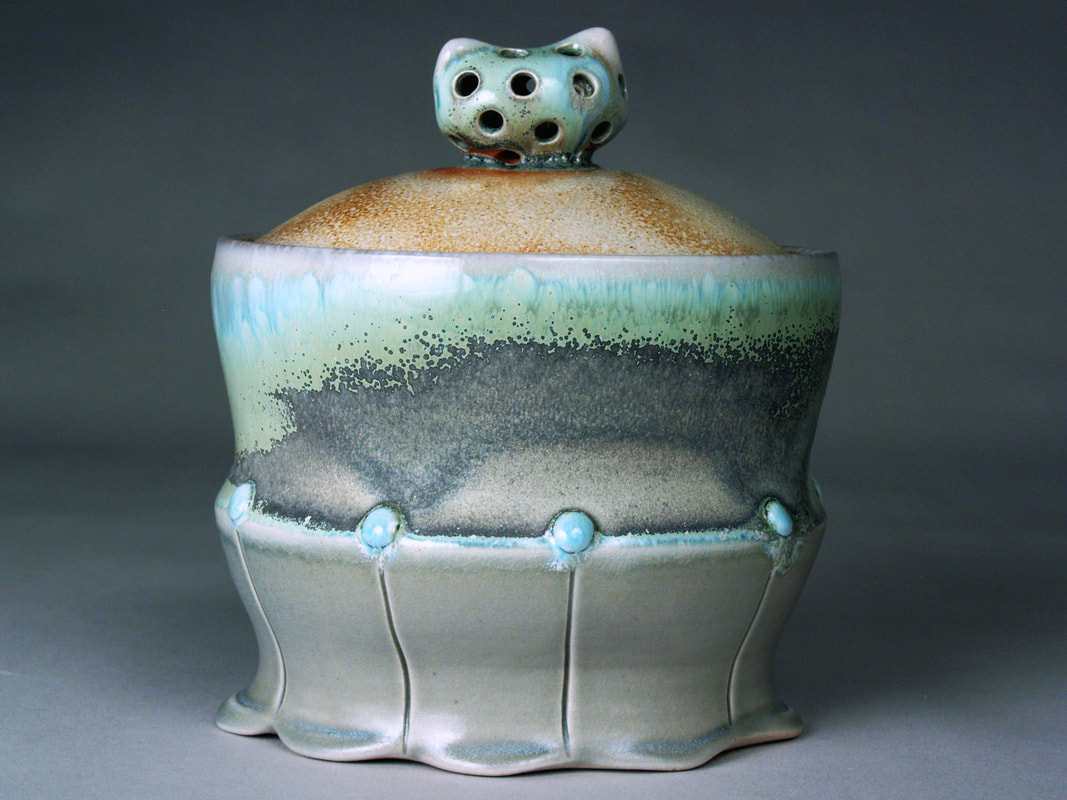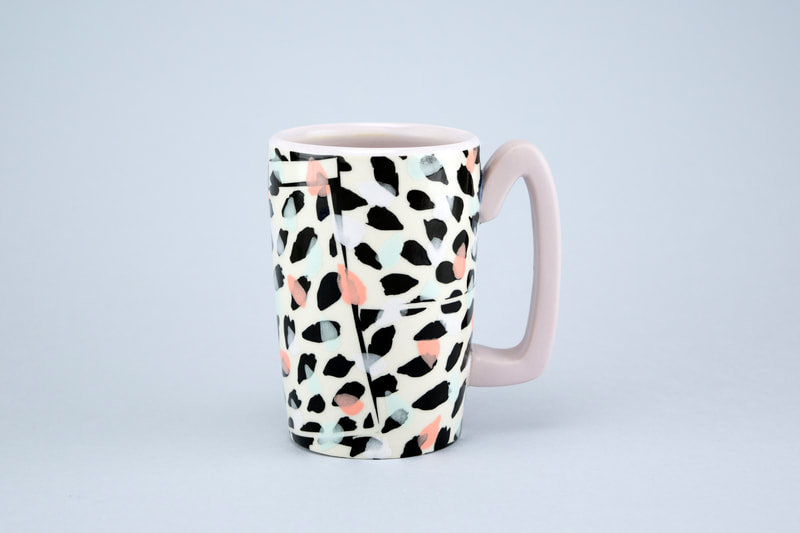The Interview
What lead you to leaving soda firing? "I went to grad school at University of Florida. We had two soda kilns there that had challenges. I spent the first year trying to fire the large one with poor results. There wasn’t a community of people interested in atmospheric firing, most electric fired. I had trouble filling the kiln by myself to meet my critique deadlines. Additionally the large kiln was in poor repair and needed rebuilding. The small soda kiln shared a chimney with the large soda kiln. This was a bad design and both struggled with getting to temperature. After a number of firings that didn’t get to temperature with 20 hours of firing (what should have been 8 hours with a proper overnight candle), I convinced the department to give me funding and credit to rebuild the large soda kiln with the teaching lab tech. Building the new soda kiln was a fantastic experience. I had built parts of kilns before but never one from start to finish with just two people. So as you can imagine it took longer than expected. In the meantime I had to keep making work. For a time I switched to cone 10 reduction in our Geil kiln. Then I did an independent study with Linda Arbuckle focused on pattern and color. As I became more interested in creating dynamic surface on my clay work, reduction gas firing made less sense. I also began to question what kind of a studio/kiln situation I would have after grad school. I am a city kid, I like living in metropolitan areas and my ultimate goal was a home studio. I made the difficult decision to change my clay, glazes and forming processes to create a body of work that made sense for cone 6-7 electric firing. Electric firing is not only more sustainable but its more economical and something that can exist in a densely populated area. Just as I was beginning to figure out my new materials we finished building the soda kiln. I had gotten so far from the soda-fired aesthetic it just didn’t make any sense to go back. I do enjoy participating in a soda firing when I get the chance but for now electric firing is the best fit for my work and my lifestyle." What aspects do you miss about soda firing, and what aspects do you not miss about soda firing? "I miss the active firing process and how it can insight a sense of community with others: I always enjoyed the camaraderie that came from working towards a common goal. The varied firing results made each kiln-opening feel like Christmas morning. That anxiety and anticipation while waiting for the kiln to cool was an intoxicating feeling. Would all the work pay off? In the same vein, I do not miss the high loss rate of soda firing or the heat exhaustion I felt after spraying soda into the kiln. Towards the end of my time working with soda, my brain always felt so fuzzy the day after firing. The health hazards of soda firing are real and even though I always wore the proper protective gear (respirator, face shield, long sleeves and pants made from cotton) I don’t miss exposing myself to those vapors. It also feels so good to know that the enormous amount of time I spent loading, firing and bricking up the door can be utilized in other ways." What aspects of soda firing do you reference in your current work? "Honestly, I don’t think I do reference soda firing in my current work. My surfaces are tight, colorful and controlled. I don’t incorporate texture or carving anymore. Solid blocks of underglaze and a custom glaze palette create graphic geometric motifs on my electric-fired work. Instead of letting the firing process finish my work, I make intentional decisions when I am forming the work as to how I will decorate and glaze it. I’d say my work now is more a reaction from than a reference to my older soda work. My soda-fired work never had a voice that was uniquely mine; it was all derivative of other people’s work that I was influenced by at the time. Freeing myself from that type of firing and process helped me find my style." Any recommendations/resources about how to transition from soda firing to electric firing? (Click Links below to see the resources) More About Adrienne Eliades: She is a studio potter and educator living in Vancouver, Washington. She earned a B.A. in Studio Art from the University of North Carolina at Wilmington in 2008 and an MFA from University of Florida in 2016. Adrienne has been artist-in-residence at Ash Street Project in Portland, Oregon, Guldagergaard International Ceramic Research Center in Denmark and the Bright Angle in Asheville, NC. Her works and writing are featured in numerous publications including UPPERCASE Magazine, Craft in America, Ceramics Monthly and Pottery Making Illustrated. Ceramics Monthly named her an Emerging Artist in 2018. In addition to maintaining a vibrant studio practice, Adrienne teaches at Portland Community College, is the Studio Coordinator for Idyllwild Arts HOT CLAY Summer Program in Idyllwild, California and has presented over 20 workshops nationwide. Find Adrienne on Instagram @bugaboo_eyes And learn more about her on her website: www.adrienneeliades.com If you would like to see future soda fire artists interviews like this, and to learn more about soda firing from me join my soda fire community by clicking the button below.
|
Hi, I'm Lisa the artist and creator of this content.
Here on my blog I share behind the scenes, events, and activities related to my art. GET INSPIRATION AND SPECIAL DEALS DELIVERED STRAIGHT TO YOUR INBOX!
Categories
All
Archives
February 2024
|










 RSS Feed
RSS Feed